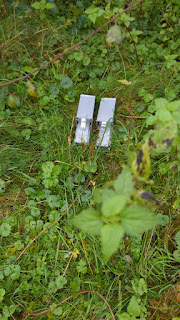Wonderful Worms
Recently we did some fieldwork on campus to investigate soil characteristics and health in different locations - in the woods versus the grassland, by exploring soil type/structure and crucially, soil organisms present. At each habitat, we flung the quadrat randomly (very fun), and then dug a sample of soil from within the quadrat with a trowel (also quite fun).
Earthworms in the UK
There are a whopping 31 species of earthworm found in the British Isles, largely within the Lumbricidae family. There are 3 different categories of earthworm:
- Epigeic earthworms - these are surface dwellers which live in, and consume, leaf litter and compost.
- Endogeic earthworms - these are shallow burrowers which make horizontal burrows in the soil to move and feed
- Anecic earthworms - these are deep burrowers which make vertical burrows in the soil, and also make worm casts on the surface
The earthworms we found were lob worms, Lumbricus terrestris, identifiable by their large, fat body.
This particularly long worm emerged from the ground, with lob worms able to reach up to 35cm in length!
Importance of Earthworms
Earthworms are incredibly important to the health of soil ecosystems. As decomposers, earthworms eat dead and decaying plant material, transferring nutrients locked up in the organic matter back to the soil, where they can be taken up again by plants. They are therefore integral to nutrient recycling. Some earthworms emerge at night to feed on dead plant material on the ground surface, retreating to their burrows pulling leaf litter and other plant material with them. Without these wonderful, wriggly worms, we would struggle to grow the food we eat, and for that we must be thankful for them.






Comments
Post a Comment